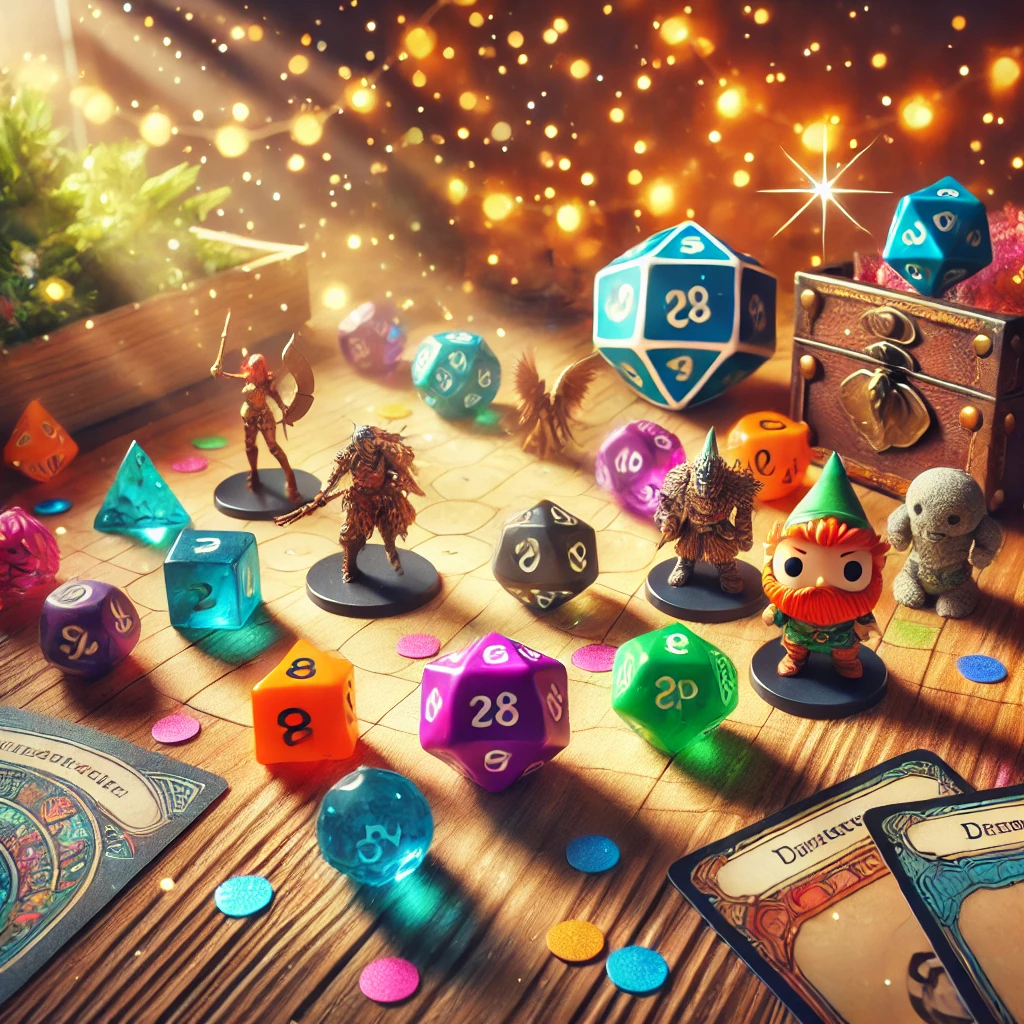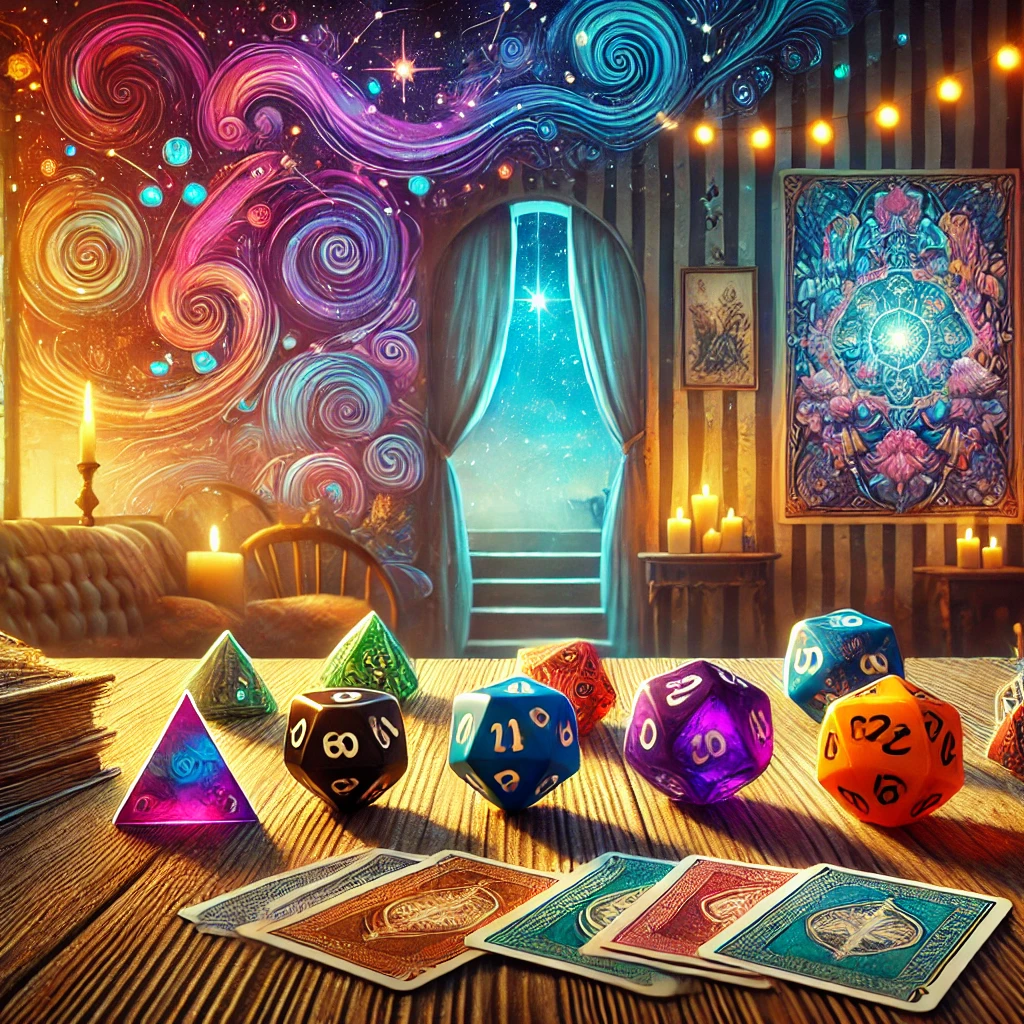Introduction
Greetings, Random Rollers! I’m Xucaen—the Dude of Dice and Prophet of Probability. Today, as my thoughts tumbled like four dimensional polyhedrals, I found myself dreaming of a brand-new tabletop game empowered by the magic of dice. And you know what? I think I might just be onto something!
It all started with a simple idea: I wanted to create a dice game that combined the strategic depth of Magic: The Gathering, the thrilling randomness of Dungeons & Dragons, and the fast-paced gameplay of popular board games like Sorry! and War!. This concept became the seed for a unique game that marries skill, strategy, and chance in a way that is both engaging and fun for players of all ages. What began as a straightforward premise has since evolved into a dynamic project with multiple layers of gameplay and endless possibilities for customization.
Part 1: Genesis of an Idea
When I first envisioned the game, it was centered around players rolling dice to determine the outcomes of card-based interactions. However, as I explored different mechanics, I realized there were many ways to refine and expand the concept:
- Choice-Driven Randomness: I introduced the idea of players choosing which dice to roll, adding a layer of strategy. This allowed players to weigh the risks and rewards of each roll based on the card’s requirements.
- Probability Experiments: The game grew to include scenarios where players roll all the dice and score based on the results. This brought an educational aspect, teaching players about probability, randomness, and statistical patterns while keeping the gameplay fun.
- Two Product Lines: I decided to split the game into two marketable versions:
- Probability Experiment Kit: Focused on teaching probability with dice, cards, and experiments like “Predict the Odds” or “Combine Rolls.” Players could analyze their results and track patterns, making it perfect for classrooms or casual learning.
- Themed Card Game: This version featured collectible cards with embedded rules. For younger players, the gameplay was simple: roll all the dice and score. For older kids and adults, the mechanics encouraged strategic dice selection, competitive scoring, and even cooperative team play.
Part 2: Fantasy-Themed Sample Cards (v0.0.1)
For the first prototype, I chose a fantasy theme to capture the imagination of players and set the tone for future expansions. The sample cards included:
- Characters: Cards like the “Elven Archer” and “Dwarven Berserker” came with unique abilities tied to specific dice rolls. For instance, the Archer’s attack was more effective with high rolls on a D8, while the Berserker’s power increased with every successful roll of an even number.
- Spells and Artifacts: These cards introduced additional mechanics. Spells like “Fireball” required a combined roll of over 10 on two dice, while artifacts like the “Amulet of Luck” allowed players to reroll a die once per turn.
- Monsters and Challenges: Players faced cards like the “Stone Golem,” which required high rolls to defeat, or the “Cursed Treasure Chest,” where riskier rolls could lead to big rewards—or penalties.
Future expansions will explore other themes, such as sci-fi, historical battles, or whimsical settings, with the possibility of mixing decks for custom gameplay.
Part 3: Gameplay Rules (v0.0.1)
The current rules for v0.0.1 emphasize balance, strategy, and the excitement of rolling dice. Here’s an overview:
- Setup: Each player starts with a hand of five cards and a set of dice (D4, D6, D8, D10, D12, D20). Players shuffle the deck and draw cards at the start of each turn.
- Turn Structure:
- Draw a card.
- Play a card from your hand (e.g., an attack, a spell, or an item).
- Roll dice as specified by the card.
- Resolve the outcome based on the card’s rules.
- Scoring: Players earn points based on successful actions (e.g., defeating monsters, completing challenges). The game ends when the deck is depleted, and the player with the highest score wins.
- Variants: Competitive play allows players to win or lose cards based on their scores. A co-op mode lets teams combine their efforts against a common challenge, encouraging collaborative play.
Part 4: Closing and Wrap-Up
This journey has been a fascinating blend of creativity, strategy, and experimentation. As I refined the game, I found inspiration in classics like Magic: The Gathering and Dungeons & Dragons, as well as modern innovations in tabletop gaming. While there are already countless games on the market, I believe there’s always room for new ideas—and perhaps my game will someday sit on shelves alongside the best of the rest.
What makes this project exciting is its versatility. Whether you’re a seasoned gamer or a curious newcomer, the combination of cards and dice offers something for everyone. From teaching probability to building custom decks for competitive play, the possibilities are endless. And who knows? Maybe this game will inspire others to create, innovate, and keep the spirit of gaming alive.
Stay tuned for more updates, and let the dice roll your fate!


Leave a Reply